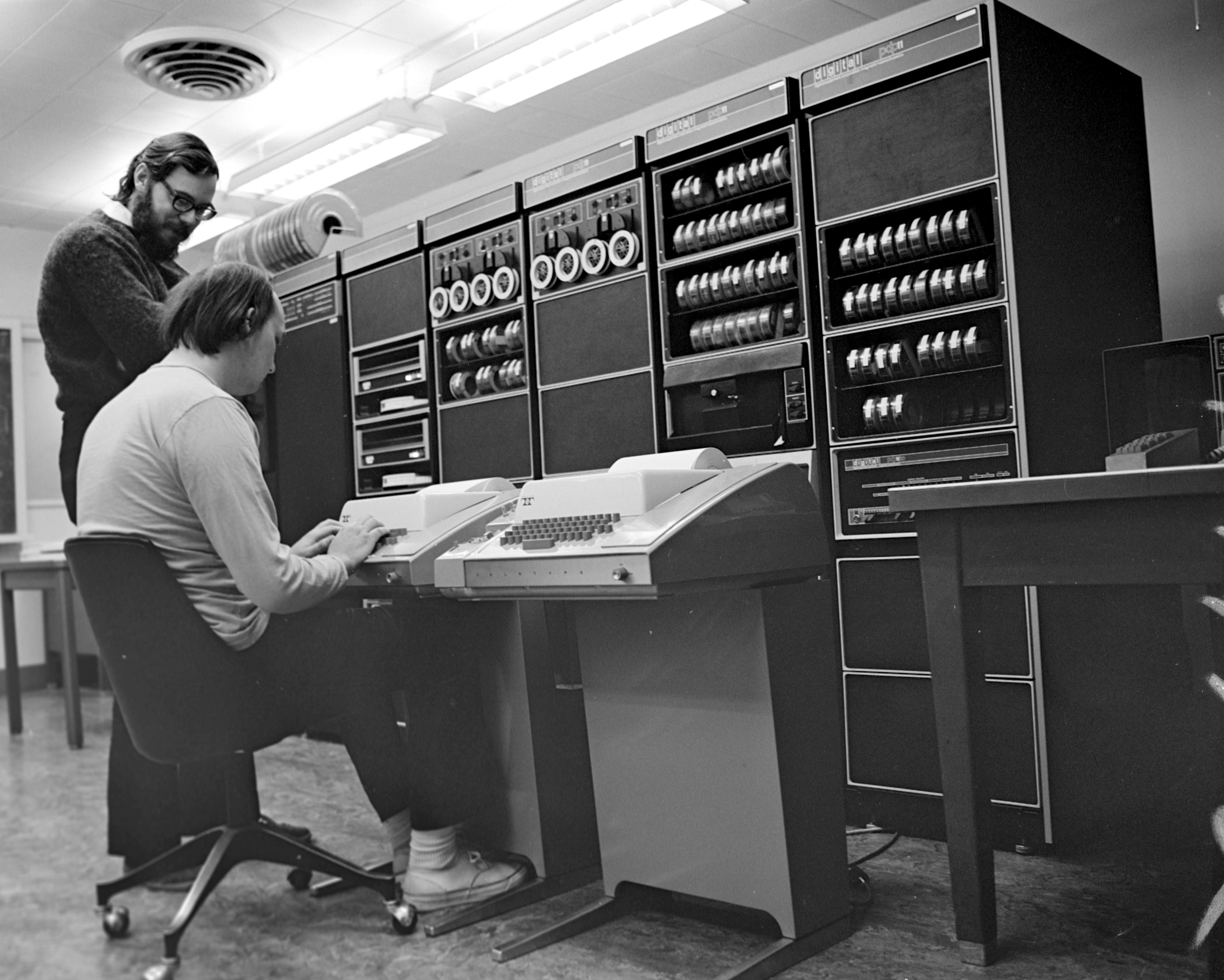


 He wrote a stripped down version of BCPL, which was dubbed "B". He also had to write a
very small operating system to work in the PDP-7, which he called UNICS (a play on MULTICS).
We now call it UNIX. During this same time, a co-worker by the name of Dennis Ritchie
started writing a language who's core features were derrived from B, but also incorporating
many ideas from other colleagues. This new custom programming language,
they called "C". C was written in assembly language, as was UNIX originally,
but later UNIX was re-written in C so that it could be ported easily to other
computers.
He wrote a stripped down version of BCPL, which was dubbed "B". He also had to write a
very small operating system to work in the PDP-7, which he called UNICS (a play on MULTICS).
We now call it UNIX. During this same time, a co-worker by the name of Dennis Ritchie
started writing a language who's core features were derrived from B, but also incorporating
many ideas from other colleagues. This new custom programming language,
they called "C". C was written in assembly language, as was UNIX originally,
but later UNIX was re-written in C so that it could be ported easily to other
computers.
|
10011011 01101101 11010010 11010010 10011011 01101101 11010010 11101001 10010010 11011011 11010010 11101001 11101111 00100100 10010010 11011011 01101101 11010010 10011011 01101101 11010010 11010010 11010010 10011011 11101001 10010010 11011011 11101001 10010010 11011011 |
|
push ax push bx mov ax,33 mov bx,45 add ax,bx pop bx pop ax jnz next |
mkdir Make Directory ls List cd Change Directory mv Move a file rm Remove (delete) a file nano - a simple text editorUntil I get a course written on Linux/Unix (coming soon) a good reference is the "Linux Command Line and Shell Scripting Bible" by Richard Blum (Wiley Publishing). You can either BUY it or use an ONLINE PDF version. Trust me - while it may be a bit pricy, you won't regret purchasing that book.